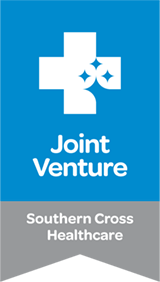- Services & Locations
- Physio Clinic Locations
Keeping your body & mind A+ View mapBOOK NOWOnline Shop
Northland
Whangarei- Dargaville
Rodney
Snells Beach- Warkworth
- Silverdale
North Shore
Albany- Albany - Neuro Physio Clinic
- Milford
- Mt Eden
- Ellerslie
- Clinical Suite Balmoral
East Auckland
Highbrook East Tamaki- Howick
South Auckland
Airport Oaks- Papakura - Counties Care
- Pukekohe
- Taupo
- Turangi
- Clinical Suite Waikato
- Rotorua
Taranaki
Hāwera- New Plymouth
- Ōpunake
Manawatu - Whanganui
Feilding- Marton
- Palmerston North
- Whanganui
Auckland Central
Bay RoskillWaikato
Hamilton - Te Rapa - Blog
- About Active+
- About Active+
- Become part of Active+
- Become part of Active+
- Returning to work after a chronic pain diagnosis presents challenges, requiring careful navigation.
- Requesting accommodations like flexible hours and workspace modifications is crucial, easing the transition back to work.
- Open communication with supervisors before returning to work fosters understanding and support, addressing concerns and accommodations.
- Gradually returning to work requires prioritising tasks and managing workload effectively, practising activity pacing, and ensuring self-care.
- Acknowledge and manage persistent pain while working, focusing on coping mechanisms and accommodations rather than aiming for pain-free days.
- Recognise and appreciate the support of colleagues during absence, fostering a supportive work environment and strengthening relationships.
- Anticipate inquiries from coworkers, prepare responses respecting privacy, and communicate boundaries while appreciating concerns.
- Proactively seeking accommodations, open communication, prioritising self-care, expressing gratitude, and setting realistic expectations empower individuals to succeed at work while managing chronic pain effectively.
- Flexible working hours
- Modifications to your workspace
- Scheduled breaks
Strategies for Returning to Work with Chronic Pain
Key points
Introduction
Returning to work after a chronic pain diagnosis is a significant milestone, but it comes with its own set of challenges and adjustments. While the prospect of rejoining the workforce can be exciting, it's important to navigate this transition with care and consideration.
In this article, we'll share six effective strategies to help individuals return to work confidently while managing chronic pain.
Strategy #1: Ask for accommodations
One of the crucial steps in returning to work with chronic pain is to request accommodations. Employers are mandated to provide reasonable adjustments for employees with disabilities, including those related to chronic pain. These accommodations can include:
Initiating a dialogue with human resources prior to returning to work ensures that necessary accommodations are in place, easing the individual’s transition back into the workplace. Your clinician can support you with these conversations and if you are on an ACC return to work plan your Occupational Health therapist will work with you and your employer to establish a plan that works for everyone.
Strategy #2: Schedule a meeting with a manager or supervisor
Open communication with a direct supervisor is essential. Before returning to work, scheduling a meeting with the supervisor allows for discussions about requested accommodations and any changes in the work environment. An early and proactive approach fosters understanding and support from management, alleviating concerns about the return to work.
Strategy #3: Set your priorities
Returning to work doesn't mean immediately resuming previous performance levels. The most likely scenario is that this will be a gradual process. Setting priorities, practising activity pacing, and prioritising essential tasks are vital skills that will help to make your work-life more manageable. Your physio or occupational therapist can help you by planning activities effectively, individuals can manage their workload while ensuring adequate rest and self-care, thereby minimising the impact of chronic pain on productivity.
Strategy #4: Acceptance of some pain
It's important to acknowledge that some level of pain may persist while working. Rather than aiming for pain-free days, focus on utilising coping mechanisms and accommodations to manage pain effectively. Understanding and accepting you may experience some pain empowers individuals to navigate work responsibilities while prioritising their well-being. Remember that with persistent pain, not all hurt equals harm.
Strategy #5: Express gratitude to coworkers
Acknowledging the support of coworkers during one's absence is also essential. Your colleagues are the people most likely to step-in and help you with certain tasks or activities, and it’s important to show gratitude in order to ensure things run smoothly. A simple gesture of gratitude fosters a supportive work environment and ultimately strengthens professional relationships.
Strategy #6: Be prepared for questions
Returning to work often prompts inquiries from colleagues. While no one is obliggated to disclose personal health information, preparing responses to common questions can alleviate anxiety. Communicating boundaries respectfully and expressing appreciation for concerns while maintaining privacy is key.
Summary
Returning to work with chronic pain requires careful planning, support and consideration. By proactively seeking accommodations, communicating openly with supervisors, and prioritising self-care, individuals can navigate the challenges of the workplace effectively. Expressing gratitude to supportive coworkers and setting realistic expectations contribute to a successful return to work journey. Embracing these strategies empowers individuals to thrive professionally while managing chronic pain effectively.
Shareby Active+ Published
Keeping your body & mind A+






